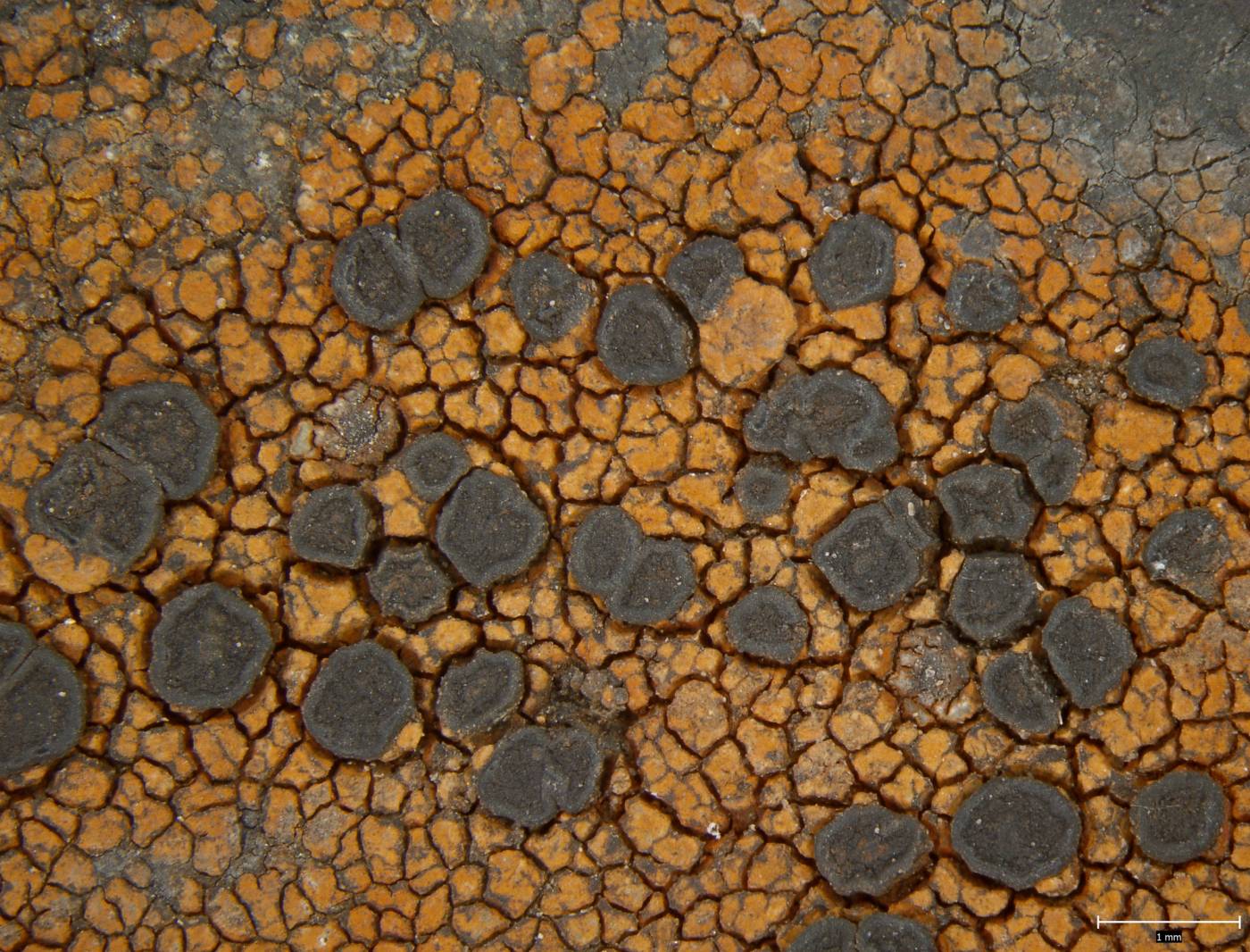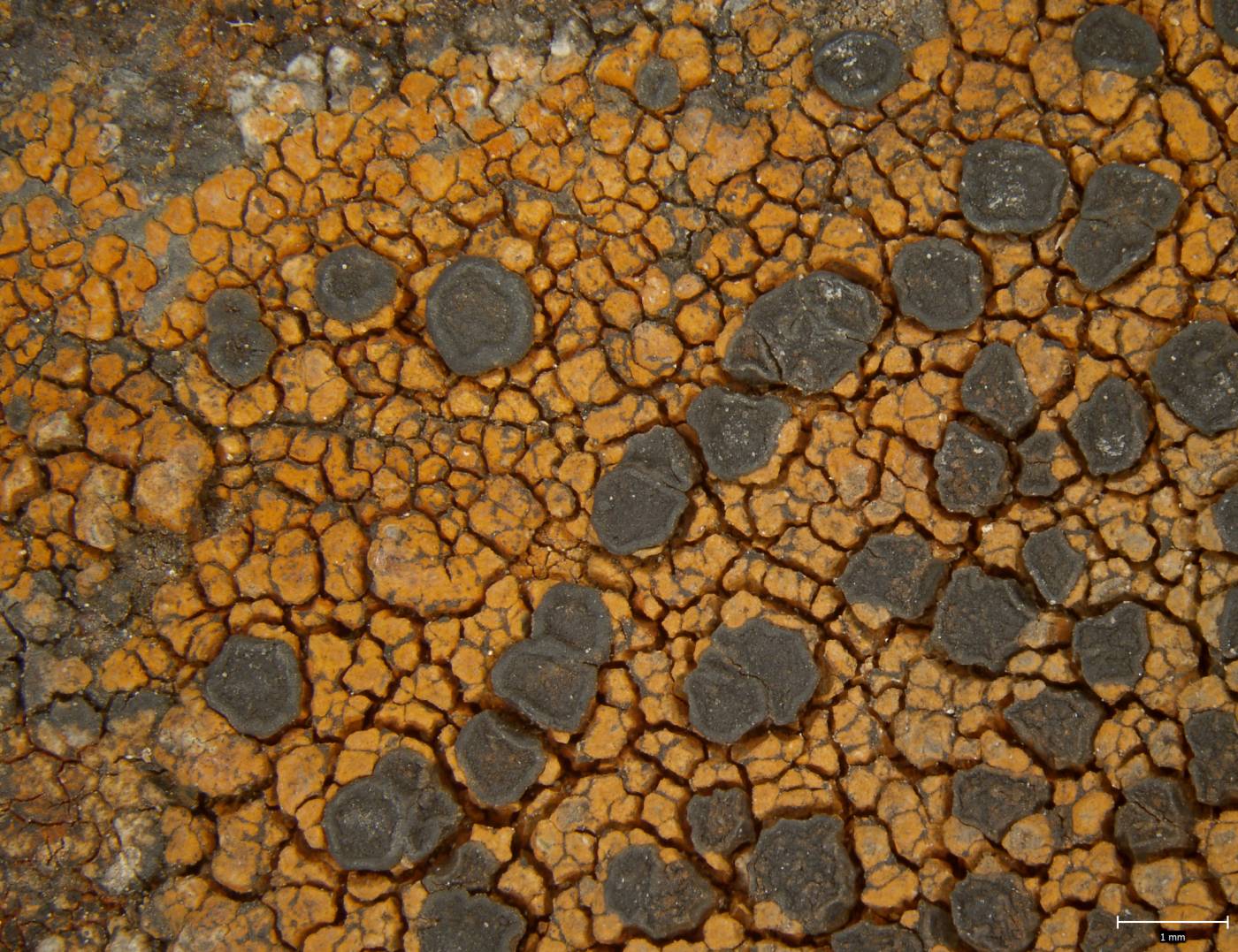Rhizocarpon oederi is characterized by a rust-coloured thallus and an inconspicuous prothallus. The black mat apothecia are flat to slightly convex, angular, irregular, even grooved and often umbonate. The spores are small compared to other Rhizocarpon species (12–18 × 3–7 µm), usually 3-septate to submuriform. It is similar to the rare R. pycnocarpoides, which is distinguished by mostly muriform and larger spores (24–30 × 10–15 µm; Westberg et al. 2015). Another similar lichen, Tremolecia atrata, has glossy concave apothecia and simple spores.
The species is scattered all over Europe, but can be abundant at suitable places. It usually grows at lower elevations at humid siliceous metal-rich rocks. It can be found at both natural and anthropogenic (usually resulting from mining) substrates. Acarospora sinopica or Lecidea silacea have a similar ecology. It is rare in the Czech Republic, currently known from about ten localities.
Literature: Westberg M., Timdal E., Asplund J., Bendiksby M., Haugan R., Jonsson F., Larsson P., Odelvik G., Wedin M. & Millanes A. M. (2015): New records of lichenized and lichenicolous fungi in Scandinavia. – MycoKeys 11: 33–61.
taxonomic classification:Ascomycota → Lecanoromycetes → Rhizocarpales → Rhizocarpaceae → Rhizocarpon
Red List (Liška & Palice 2010):VU – vulnerable
Red List (Malíček 2023):C3 – endangered
Occurrence in the Czech Republic
All records: 26, confirmed 25. One click on a selected square displays particular record(s), including their source(s).

